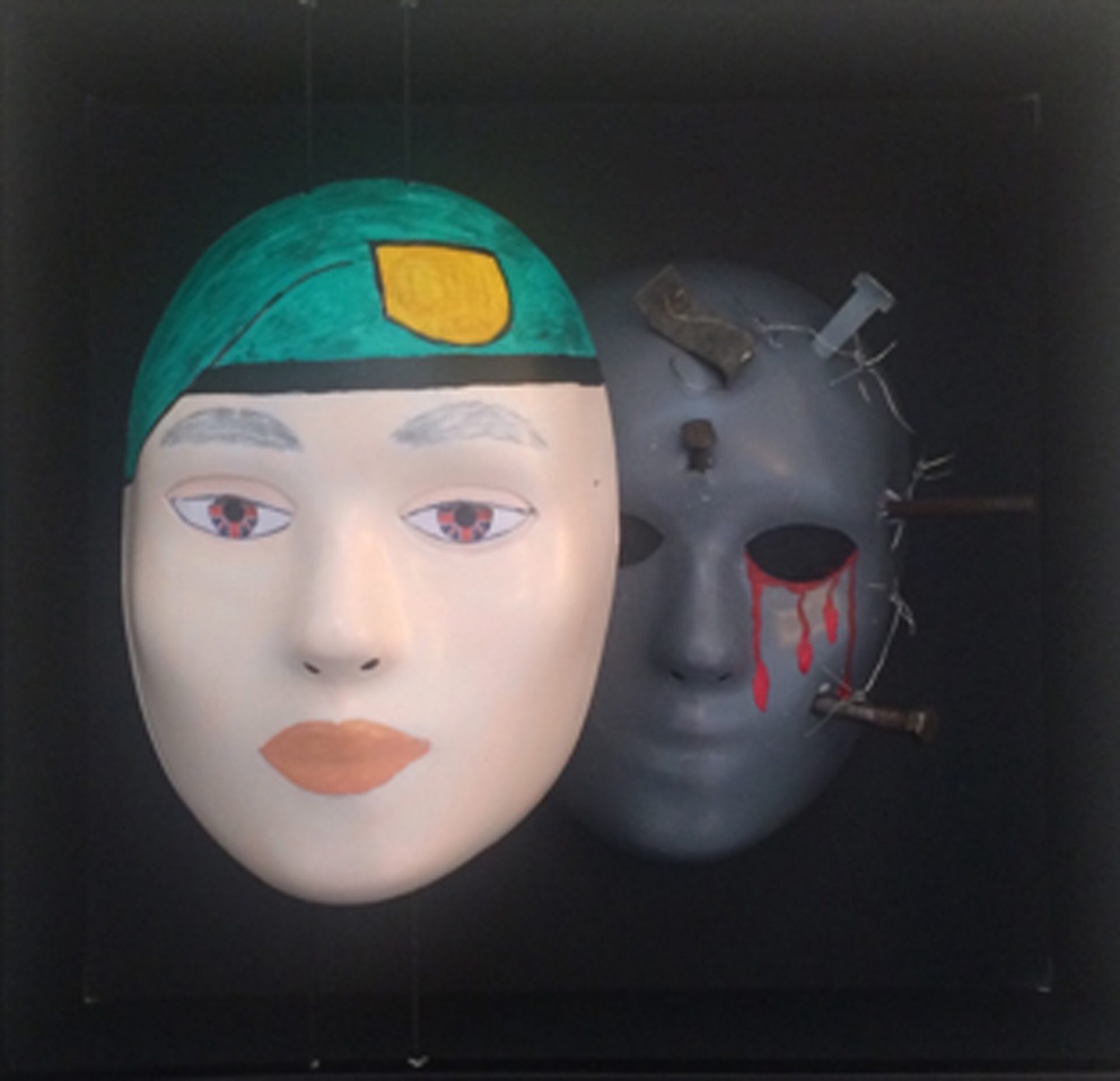The Shadow of War
AJ had first joined the military as a seventeen-year-old boy and went on to serve as a sniper. What particularly struck me was how for Marine AJ the real war started when he returned home from his tour. He had faced the physical dangers out in the field, but he felt completely unprepared for the psychological conflict that ravaged his mind when he returned. He describes how he could no longer concentrate and that he no longer cared about the emotions of others. He called it a form of emotional numbness, coupled with anxiety that morphed into a paranoia and anger that he could not control. His description gave me a feeling of what it must be like to be so isolated from the world around you, almost trapped in a mind that no longer feels your own. My use of the grey mask suspended behind the soldier’s face, depicts the idea that the solider now lives a life subsumed by the shadow of his traumatic past. The red blood seeping from the shadow’s eyes, along with the metal material, acts as a physical representation of this soldier’s psychological damage and as a reminder that PTSD can cause just as much pain as physical trauma. Moreover, the use of the metal as a medium portrays the weight of the burden PTSD can cause, with the piercing of the shadow’s skull illustrating the acute pangs of anger, anxiety and guilt that AJ described. I positioned the grey mask slightly hidden behind the face in order to demonstrate how this pain is not physically visible to the rest of the world, but something that only the sufferer can truly understand, which strikes me as an extremely isolating situation. In AJ’s account it was clear that when he first returned home, people did not think to relate his unusual behaviour to PTSD. When he dived for cover after hearing a ceremony cannon, the reaction of those around him made him feel embarrassed and his unusual behaviour in training classes led to others jokingly questioning, is he going mad? It struck me how people found it hard to look past the physical and it seems to me that this mind-set forms part of the answer to the question why psychological illnesses like PTSD often remain undiagnosed.
In order for clinicians to best engage with a potential sufferer of PTSD it seems they must not solely treat the condition as a definable cognitive illness, but engage with the patient’s story in order to prevent fear of generic labelling.
Reference
Green M. Aftershock the Untold Story of Surviving Peace. London: Portobello Books; 2015.
Whole Person Care, Year One, 2016

0 Comments